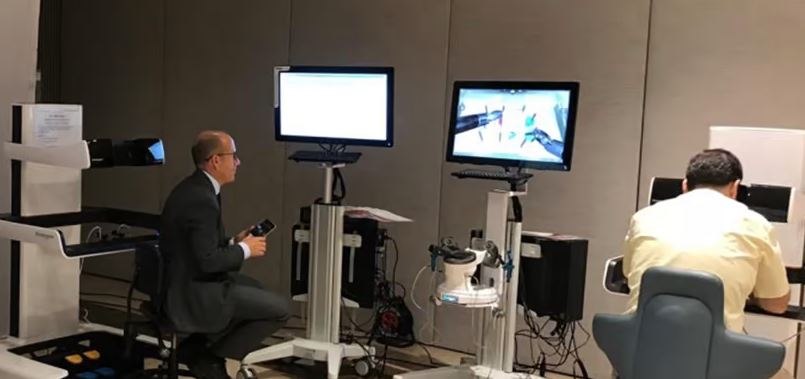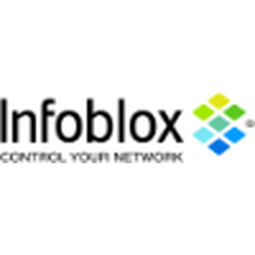Customer Company Size
Large Corporate
Region
- America
Country
- Canada
Product
- Infoblox-1050
- Infoblox-550
- Infoblox Grid™
- NS1
Tech Stack
- Infoblox Grid™ technology
- NS1
Implementation Scale
- Enterprise-wide Deployment
Impact Metrics
- Customer Satisfaction
- Productivity Improvements
- Digital Expertise
Technology Category
- Functional Applications - Remote Monitoring & Control Systems
- Networks & Connectivity - Network Management & Analysis Software
Applicable Industries
- Education
Applicable Functions
- Business Operation
Use Cases
- Remote Asset Management
Services
- System Integration
- Software Design & Engineering Services
About The Customer
Universite de Montreal is a public francophone research university in Montreal, Quebec, Canada. The university is Quebec’s largest research institution and the second largest in Canada, allocating close to $447.2 million to research conducted in more than 150 research centers as of 2007. There are more than 55,000 students enrolled in undergraduate and graduate programs. The university is known for its extensive research activities and is a significant contributor to the academic and scientific community in Canada. It offers a wide range of programs and is committed to providing high-quality education and research opportunities to its students.
The Challenge
To deliver essential DNS services, the university had multiple UNIX platforms throughout the campus that had different OS and open source software versions for delivering DNS and DHCP. Universite de Montreal had developed an in-house IPAM solution which was very complex and hard to manage. Because it was based on open source, it proved difficult to maintain, as the IT team had to edit multiple files on different systems without any sophisticated automation system. The monitoring of DNS and DHCP was difficult as the IT team often faced a lack of addresses in the DHCP pool. And, managing the authentication to the system by using the university’s centralized LDAP was a factor, so being able to delegate zone and subzones to local managers was also very important. Finally, the university was in the process of migrating from a public based IP address domain to a secure and private Class A. Michel L’Heureux, Director of Telecommunications at Universite de Montreal came to the decision that their homegrown solution was compromising network availability and becoming increasingly difficult to administer; it was time to look for another solution.
The Solution
In L’Heureux’s quest to find a better solution for the university, he and his team found Infoblox, BlueCat, and a few other vendors in an Internet query. During the evaluation process, Infoblox revealed itself as the best choice for providing the university with the essential network infrastructure automation and control they needed. The university selected Infoblox-1050 appliances running NS1 and unique Infoblox Grid™ technology. The Infoblox Grid technology links a collection of appliances into a unified, centrally-managed platform. Benefits include resilient operations, unified management and real-time, secure, system-wide updates. They also selected Infoblox-550 appliances to address all its DNS, DHCP and IPAM needs throughout their campus environment. The central management, easy updates/patching and “one-button” disaster recovery capability alleviated months of work, condensing it into mere hours.
Operational Impact
Quantitative Benefit

Case Study missing?
Start adding your own!
Register with your work email and create a new case study profile for your business.
Related Case Studies.

Case Study
Revolutionizing Medical Training in India: GSL Smart Lab and the LAP Mentor
The GSL SMART Lab, a collective effort of the GSL College of Medicine and the GSL College of Nursing and Health Science, was facing a challenge in providing superior training to healthcare professionals. As clinical medicine was becoming more focused on patient safety and quality of care, the need for medical simulation to bridge the educational gap between the classroom and the clinical environment was becoming increasingly apparent. Dr. Sandeep Ganni, the director of the GSL SMART Lab, envisioned a world-class surgical and medical training center where physicians and healthcare professionals could learn skills through simulation training. He was looking for different simulators for different specialties to provide both basic and advanced simulation training. For laparoscopic surgery, he was interested in a high fidelity simulator that could provide basic surgical and suturing skills training for international accreditation as well as specific hands-on training in complex laparoscopic procedures for practicing physicians in India.

Case Study
IoT platform Enables Safety Solutions for U.S. School Districts
Designed to alert drivers when schoolchildren are present, especially in low-visibility conditions, school-zone flasher signals are typically updated manually at each school. The switching is based on the school calendar and manually changed when an unexpected early dismissal occurs, as in the case of a weather-event altering the normal schedule. The process to reprogram the flashers requires a significant effort by school district personnel to implement due to the large number of warning flashers installed across an entire school district.

Case Study
Implementing Robotic Surgery Training Simulator for Enhanced Surgical Proficiency
Fundacio Puigvert, a leading European medical center specializing in Urology, Nephrology, and Andrology, faced a significant challenge in training its surgical residents. The institution recognized the need for a more standardized and comprehensive training curriculum, particularly in the area of robotic surgery. The challenge was underscored by two independent studies showing that less than 5% of residents in Italian and German residency programs could perform major or complex procedures by the end of their residency. The institution sought to establish a virtual reality simulation lab that would include endourological, laparoscopic, and robotic platforms. However, they needed a simulator that could replicate both the hardware and software of the robotic Da Vinci console used in the operating room, without being connected to the actual physical console. They also required a system that could provide both basic and advanced simulation training, and a metrics system to assess the proficiency of the trainees before they performed surgical procedures in the operating theater.

Case Study
Edinburgh Napier University streamlines long-distance learning with Cisco WebEX
• Geographically dispersed campus made in-person meetings costly and inconvenient.• Distance-learning programs in Malaysia, India, and China required dependable, user-friendly online tools to maximize interaction in collaborative workspaces.• Virtual learning environment required a separate sign-in process, resulting in a significant administrative burden for IT staff and limited adoption of collaboration technology.

Case Study
8x increased productivity with VKS
Before VKS, a teacher would spend a lot of time showing a group of 22 students how to build a set of stairs within a semester of 120 hours. Along with not leaving the teacher much time to provide one-on-one support for each student to properly learn carpentry, it also left a considerable amount of room for error. Key information would be misinterpreted or lost as the class was taught in the typical show-and-tell way.

Case Study
Scalable IoT Empowering GreenFlex's Sustainable Growth
GreenFlex, a company that supports sustainable development, decarbonization, and energy efficiency, faced several challenges in its quest to expand its business. The company needed to deploy a robust and sustainable IoT technology to support its growth. It was crucial for them to monitor and control devices at customer sites in a safe and reliable manner. They also needed to integrate devices across a range of communication protocols and gather and act on data to meet efficiency targets. GreenFlex had previously built IoT capabilities into its digital platform, GreenFlexIQ, to monitor and manage customer sites remotely. However, they soon realized that they needed a new platform to support their ambitions. They needed a platform that could scale to connect more devices for production management and make it easier for the operations team to manage devices in the field.







